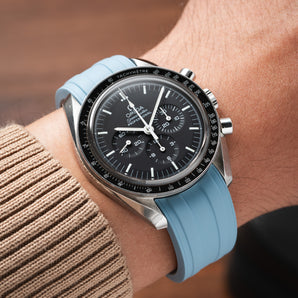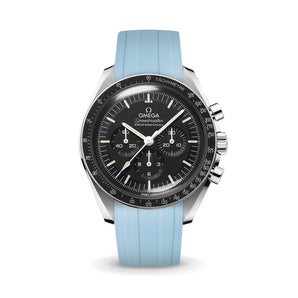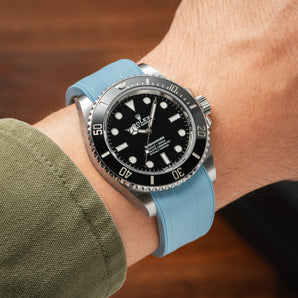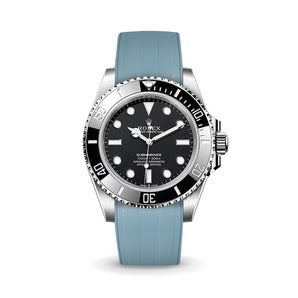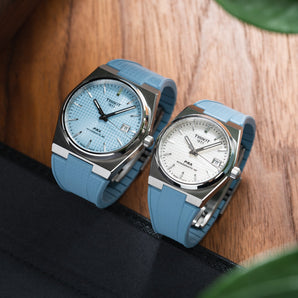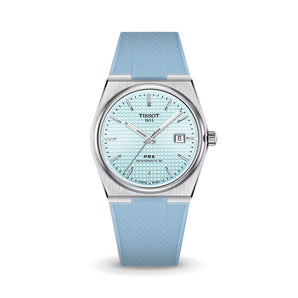In an industry dominated by Swiss heritage and tradition, Joshua Shapiro represents something remarkable—the successful revival of an entire national watchmaking tradition that had been declared dead for over half a century. What began as an educator's hobby, inspired by a George Daniels book and 100-year-old engine-turning machines in a garage, has evolved into America's first fully integrated watch manufacture since the 1960s. Shapiro's journey from self-taught skeletoniser to master of guilloché to complete movement manufacturer reads like an industrial resurrection story.
What makes Shapiro's achievement particularly significant is his mastery of engine turning — the most artisanal form of guilloché creation — combined with his embrace of cutting-edge CNC technology for movement production. This hybrid approach allows him to maintain the soul and individual character that collectors crave while achieving the precision necessary for reliable timekeeping. As independent watchmaking faces increasing pressure to differentiate in a crowded market, Shapiro's story offers a compelling alternative to the typical Swiss supplier model — complete vertical integration driven by patriotic purpose rather than purely commercial considerations.
Origins & Engine Turning Discovery
Ken: How would you describe J.N. Shapiro watches?
Joshua: We're a brand always striving towards perfection. It started as a very small operation, and now there are 14 of us. We're striving to create everything under one roof and do it to the highest level possible.
Ken: When I first learnt about your brand three to four years ago, it was very much about guilloché and the dials. What drew you to engine turning? What made you want to make engine-turned dials?
Joshua: Like many independent watchmakers, I picked up a copy of George Daniels, and my dream was to create my own watch from scratch, just like he had done. I realised that to amass the equipment to do that, even by hand, would be so much money, and I was just a poor educator. So I looked through the book and discovered guilloché and engine turning, and realised this is where I could start. If I master this area and get really great at making dials, then I can use that to build up a company and move on from there.
Ken: You mentioned you were an educator. How do you go from being an educator to creating your own watch company?
Joshua: It's not so different from many entrepreneurial journeys. It started as a hobby. I was a teacher, then a principal, and watchmaking was something I did on the side for fun. I just kept at it; kept trying to see how far I could go.
It goes to show that if you just keep trying and keep improving a little bit at a time, before you know it, you can be making your own watches.
Ken: When you first started, you would buy movements, buy cases, and make your own dials.
Joshua: Even before that, I'd buy movements and try to skeletonise them. The first ones, I literally destroyed.
Ken: How do you learn to do that?
Joshua: There are a few people who skeletonise that really show their work. In the beginning, it was just looking at what other people had done, learning how to use a jeweller's saw and learning about watchmaking at the same time. It was a very pure time. I wasn't making these watches for money. It was just for myself, just for fun. That's how it should be when you start something.
Ken: It's still that way, even today?
Joshua: Yeah. Except I have 14 mouths to feed and rent and bills to pay, but when I get to sit down and make things, it still feels very magical.
Ken: Would you describe yourself as a self-taught watchmaker?
Joshua: Oh, yeah. I took the British Horological Institute's distance learning course, and that started me off. But when I got into machining, especially engine turning, I talked to a lot of people and got advice. When it came down to it, to teach yourself a complex skill like that, where there are no schools, very little information. You just have to sit and try and try and try again.

American Watchmaking Revival Vision
Ken: Watchmaking — there are so many parts involved. I think it's one of the hardest things you can really teach yourself. A lot of watchmaking knowledge is within Switzerland. For those who don't know, Shapiro is one of the few that can claim their watches are made in America. That's a very big part of your journey. Was that always the vision from the start? Did you know you wanted your watches made entirely in America?
Joshua: No, when I started out, the dream was just to create one watch for myself. As things progressed and grew, I started learning about American watchmaking and the wonderful industry we had in the country, and how it was just completely destroyed by Switzerland. I feel like anyone, when they hear of an animal going extinct, there's a part of them that's sad that this beautiful creature that once existed is now gone forever. That's how I felt about American watchmaking — this wonderful industry that created millions of beautiful timepieces, and then it just completely disappeared.
Watchmaking in the 60s in America just fell off a cliff — gone. Once I discovered that, my hidden ambition was to bring it back, but I never thought I could actually do it.
Ken: What year was this? When did you decide this is something you're gonna move towards?
Joshua: The first time I really started seriously thinking about restoring American watchmaking was probably around 2015, about 10 years ago. It was just a big dream then.
Ken: And today, 2025, you've actually done it with the Resurgence.
Joshua: Yeah.

Infinity Series & Technical Innovation
Ken: Let's dive into the watches. I'm wearing the Infinity series. Talk about this weave pattern — how did you design it? I remember looking at photos of how fine, how small the engraving really is. How difficult was it to achieve this?
Joshua: When I started thinking about making my own watch, the Infinity series, in 2017, I quickly realised that in watchmaking and the arts in general, how a person gets successful or gets attention is when they introduce something new, whether technically or aesthetically. At that point, I had done a lot of basketweave, and basketweave is the most difficult of the guilloché patterns that existed. So I wanted to take things to the next level. That was the Infinity weave, which is a basketweave within a basketweave. It was extremely difficult and challenging, and it took a lot of time to get the technology, the actual pattern bars, to be able to do it, and then develop the skills. It was a big journey, but I made it the hallmark of our Infinity series, which launched in 2018. From that point onward, we started experimenting with different materials, started making our own cases, and that's when we went into tantalum.

Engine Turning vs. Modern Techniques
Ken: Looking at it honestly, I can't really see the details. I'm fairly young, but I can't even make out what's happening at the seconds subdial. It's so fine and small. I know there are many different ways to do guilloché patterns these days. Engine turning is the most traditional method, where you have a rose engine and actually turn the machine, carving out the metal. Then you have CNC, which is more mechanical. And stamped dials. When you think about guilloché dials today, how do you feel about these other techniques? What makes engine turning so special?
Joshua: It's the difference between an original by an artist versus a print. The original that they actually sat down and painted themselves is always way more special and valuable than just a copy, and I feel it's the same way with guilloché.
When I sit down and make these timepieces, it's still me, and I'm still sitting there doing every single line, one at a time by hand using 100-year-old machines.
So, these watches have a part of me inside them. When something is CNC or stamped, it's a machine doing it again and again, and that loses the specialness that my collectors really appreciate.
Ken: Do you feel like with the rise of many more dial makers doing stamped or CNC dials that your engine-turned dials become less special or less unique?
Joshua: It's interesting. There are many more stamped and CNC dials today, but also a lot more real guilloché going on. There was the heyday of guilloché from the 1920s to the 1950s on watches. Even then, it's not as much as I believe is happening today, between Metalem, Kari Voutilanen, Breguet, Benzinger — many different brands doing it by hand. There's a lot of traditional guilloché out there.
The other interesting thing is that, almost as long as real guilloché has existed, so has the stamping of guilloché. I found a coin made in California in the 1850s that had a barleycorn pattern on the back that had been stamped. I was so surprised because I'd only seen stamped guilloché much later. But that was very early. Someone in Switzerland must have made a die and sent it over to California in the frontier days and started stamping coins with guilloché.

Ken: One good thing about having these alternatives is that more people are now interested in guilloché and want to find out more. If they really want artisanal work, there are only so few brands really doing it the traditional way.
Joshua: I've never talked about this story in an interview, but when I first started out, I had my engine turning machines in my garage, just learning to use them. It was brand new for me, but my neighbour across the street had a watch with a stamped guilloché dial — very high level.
So I would literally sit there, make something by hand, then walk across the street and ask to see my neighbour's watch and look under a loupe to see how I was doing.
Ken: These days, watch collecting isn't really about telling time anymore. We've evolved way beyond that. It's really an art piece. What you've mentioned makes sense — yes, engine turning may have imperfections, but you know someone did this by hand, designed it, made it work and carved it out individually.
Joshua: The way I like to describe it, you can have someone take a picture of someone you know on your phone, and you get a perfect representation. Or you can have an extremely skilled artist sit down and try to do a realistic painting. What's going to be more accurate? The picture, of course, but the painting is so much more valuable because that artist has put his soul into it, his interpretation of who you are. That's what watches are now, too. Our cell phones tell way better time than the most expensive mechanical watch on the planet, but the art and passion that goes into making a watch, even though it's not as perfect as your phone — and something like guilloché that's not as perfect as CNC guilloché has so much more soul to it.

The Resurgence: Complete American Manufacturing
Ken: Let's move beyond guilloché and the dial. Let's talk about the movement. With the Resurgence, the dial is amazing, but I want to talk about the movement. This is the first time I've seen a Resurgence.
Joshua: Not very many people have seen it.
Ken: How many have you made up to today?
Joshua: We've only made a few so far. We're just getting ramped up for production. It's been a journey.
Ken: How difficult was it to get this entire thing made in the US, or at least a large majority of the movement?
Joshua: We're making everything in our workshop, except for the springs and crystals. The jewels are also coming from the US. How difficult — I can't explain it to you.
When we made the first prototype in six months, I thought we would be in production within another six months. It took us two years, and we had to grow the team from five or six people to 14 people.
We had to bring in millions of dollars of machinery. We had to reinvent the wheel on so many processes that in Switzerland, we could have paid a few hundred dollars and they could have done it for us. Instead, we spent months learning how to do processes like heat treating and polishing pinions — all these processes you don't even think about that go into a watch that we put hundreds of thousands of dollars of R&D into.
Ken: I just have one question: Why? Wouldn't it be much simpler to go to Switzerland, find someone who has already done it? You don't have to reinvent the wheel. You could take knowledge that has already been developed and apply that.
Joshua: We absolutely could, except that wasn't my goal. That wasn't my vision. I never got into this thinking I want to make watches so I can have wheelbarrows of money. I got into this originally because I wanted to make a watch, and then very quickly, I wanted to restore an industry. That wasn't going to happen unless my team and I put in the hard work and did things the hard way. Otherwise, it's just so easy to push it off. A pinion from Switzerland costs a few dollars. Learning how to manufacture pinions that go into our watches costs thousands of dollars. Now we're finally getting to the point where we can make them more effectively, but we had to do it the hard way first.

Manufacturing Scale & Capabilities
Ken: Just thinking about how difficult it is — share some numbers. How many machines did you have to buy? How big is your workshop?
Joshua: Our workshop is 7,000 square feet. It's big. We have two Kerns, which are the highest level of CNC machines. We have a Citizen lathe, and we have a Schaublin CNC lathe. Then we have many manual machines. Many parts that go into the Resurgence are being done by hand, like the sliding pinion, which is one of the most difficult parts in a watch, done by hand on a lathe. And we have our engine turning machines. Maybe like 40 or 50 different machines.
Ken: Huge respect for that. When I asked “Why”, and you said, “That's not my vision.” I really respect that you've stuck to your vision despite the difficulty and cost.
Joshua: It's a little crazy.
Ken: It is a little crazy. One thing I'm curious about: Is there a benefit to the consumer? If I'm someone who doesn't care for the 'Made in America' label, are there benefits to you having everything done in-house?
Joshua: For the Resurgence, we could have completely focused on the fact that it's all under one roof — designed, engineered, manufactured, assembled, and finished under one roof. Instead, I decided to focus on the fact that it was the first American-made watch in 60 years.
But what that means by doing it all under one roof and doing all the processes, we can control quality perfectly.
If we need to make a change to the watch, we can make it instantly. We just tell Chris, our engineer — he makes the change, it goes to the printer, and immediately the change is there. So, the watch is always continuously improving, continuously getting better.
Ken: Correct me if I'm wrong, most of your watches today are bespoke, so customers can change most details.
Joshua: It's mostly aesthetic — people can use different case materials, dial colours. We even have three different movement configurations, but we wouldn't do a whole custom movement. There has to be a limit at some point.
Ken: Having everything in-house allows you flexibility in how you allocate resources.
Joshua: Yeah, like the movement — we were able to offer three different bridge layouts because the bridges aren't as difficult to make as all the small components inside the movement.
Ken: I didn't know that. I thought when you mentioned different movements, it was just different plating, but it's different shapes.
Joshua: We have three different bridge configurations. The one you have is the most popular.

Movement Design & Damascening Revival
Ken: Talk about the look of this, the bridges. How would you describe it?
Joshua: We call this movement the Motion because it's a very fluid look. I was inspired by a Touchon movement from the 1920s. Touchon was a company that only existed for a short time. Their quality was even higher than Patek Philippe. I fell in love with their design aesthetic. The decoration on the movement is called damascening, and it was a process very popular in American pocket watches. It's a combination of guilloché and côtes de Genève. The Swiss took it and just did straight lines, but damascening has a lot of curvy lines.
We made it our own and brought this design back from the dead. It's a very distinct and beautiful aspect of our watches.
Ken: How did you learn to do this? It's not something you can just go on YouTube and learn.
Joshua: Nothing exists for it. We had to figure it all out ourselves. We found one video that's black and white from the 1930s from Elgin's factory, but that wasn't helpful. We just had to figure it out.
Ken: Being in LA, away from the Swiss watch industry, must not have made things easy.
Joshua: The Swiss don't do this specifically, but here's a great example. Every steel component in a watch needs to be heat-treated. It's something consumers never think about. When you machine steel, it needs to be soft. When it's in a watch, it needs to be hard. So that heat treating process is very specific and takes expensive equipment and a lot of knowledge. I was talking to a big Swiss watchmaker, and he said, “Josh, I have a company. You just pay them a few hundred dollars, and they can heat treat your parts.” I said, “Yeah, but if I do that, it won't be US-made.” We spent four months figuring out that process, and we can't just ask this company, “Hey, how do you do it?” It's all proprietary information.
Ken: I can't imagine how difficult it is to get to this point. You must be very proud when this was launched.
Joshua: Very, very proud. When we first launched this two years ago, I just had a baby girl, and it was like I had two children at the same time, a watch baby and a real baby.
Future Growth & Product Strategy
Ken: So you talked about reviving an industry. You guys are 14 people now. Are there plans to scale up? Do you imagine yourself one day being a huge company, thousands of people making thousands of watches? Where does this go? We can talk about this new piece—the new Infinity series, something priced more accessibly.
Joshua: I've never put a limit on myself on where we're gonna go. That's the luxury of having big goals — you just see where things take you. I'm sure, with your business, you can relate. I really enjoy working with fantastic people, and I learn so much from all my team members. I'm sure there'll be a point where it feels like this is getting too big. I haven't hit that point yet. We're at 14. It could be the 15th employee could do it for me, or it could be the 100th. I don't know.
In terms of the brand, we had the Infinity series, and I stopped it to focus on the Resurgence. Now that the Resurgence is finally in production, we could look at the Infinity series again. I decided to bring that back because of its more accessible price point. The brand will have two lines now — the Infinity series, where we'll buy in a movement and make our own dials and hands, which we're known for, and the Resurgence, which is everything in-house. We'll continue to do more complications for the Resurgence.
Ken: What lessons from the Resurgence are brought into the new Infinity series?
Joshua: That's a huge question because there's so much in manufacturing. The more you learn about manufacturing, the smarter you can do things. When I first started the Infinity series, the way I sharpened tools, or mounted dials onto my machine to hold them while I worked, or even the techniques I use to do the guilloché — we've had years to improve all that.
Here's a small example. When I first started doing the Infinity weave, there were all sorts of calculations I had to do while working on the pattern, and I had to hold all that in my head.
One of my watchmakers said, “Why don't we just write it down and have a chart next to the machine that you can reference?”
It was such a small, no-brainer thing, but the number of mistakes I made has dropped dramatically because I just have a chart I can reference.
Ken: Procedural improvements — not things immediately apparent to people looking at the watch, but it makes the process more efficient, brings down time and cost.
Joshua: Exactly, and also the burden on the craftsman. The better you get at doing something, the less mental drain it has. When you're learning something for the first time, it takes so much out of a person. When we learn anything new, in the beginning is when it's the most difficult.

Legacy & Team Building
Ken: One last question. What is one thing you're most proud of in your entire journey that you haven't really said before? Definitely Made in America is huge, but are there things you're really satisfied with that to most people are just, “Oh, yeah?”, but internally are big steps forward?
Joshua: It's really the team I've built. I know that's not flashy, but a business will only be as great as the people in it. The better people you have who can join you, the more you can learn from them, and the better the company will grow. I am extremely blessed that I have incredible people I work with, and I get to learn from and we learn from each other, and that directly translates into more beautiful, better timepieces.
Ken: Do you think you will go full circle and become an educator again, but this time in watchmaking?
Joshua: Maybe, as long as it's not teenagers. I might be burnt out on teenagers.
Ken: I think that'll be pretty cool if one day there's a Shapiro School of Watchmaking. That would really revive the industry.
Joshua: Yeah.
Closing Thoughts
Perhaps the most striking aspect of Shapiro's philosophy is his unwavering commitment to the "hard way" of manufacturing — spending months and hundreds of thousands of dollars developing processes that Swiss suppliers could execute for a mere fraction of the cost. This approach, which he admits is "a little crazy," reveals a fundamental difference between building a business and building an industry. His willingness to absorb enormous R&D costs for processes like heat treating demonstrates that his mission extends far beyond individual profit to genuine industrial resurrection.
Rather than chasing accolades, Shapiro’s focus on building a strong team speaks volumes about his long-term vision for sustainable watchmaking. The workshop has quietly built up its own bank of institutional knowledge — everything from tool-sharpening techniques to internal reference charts for complex calculations. These may seem like small details, but it’s about laying the groundwork so American watchmaking can thrive in the years to come.
You can learn more about J.N. Shapiro by clicking here.
*Responses have been slightly edited for length and clarity.
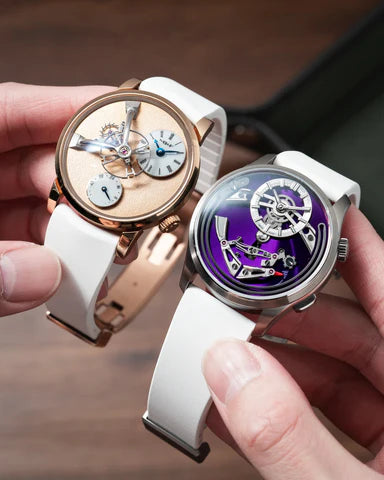

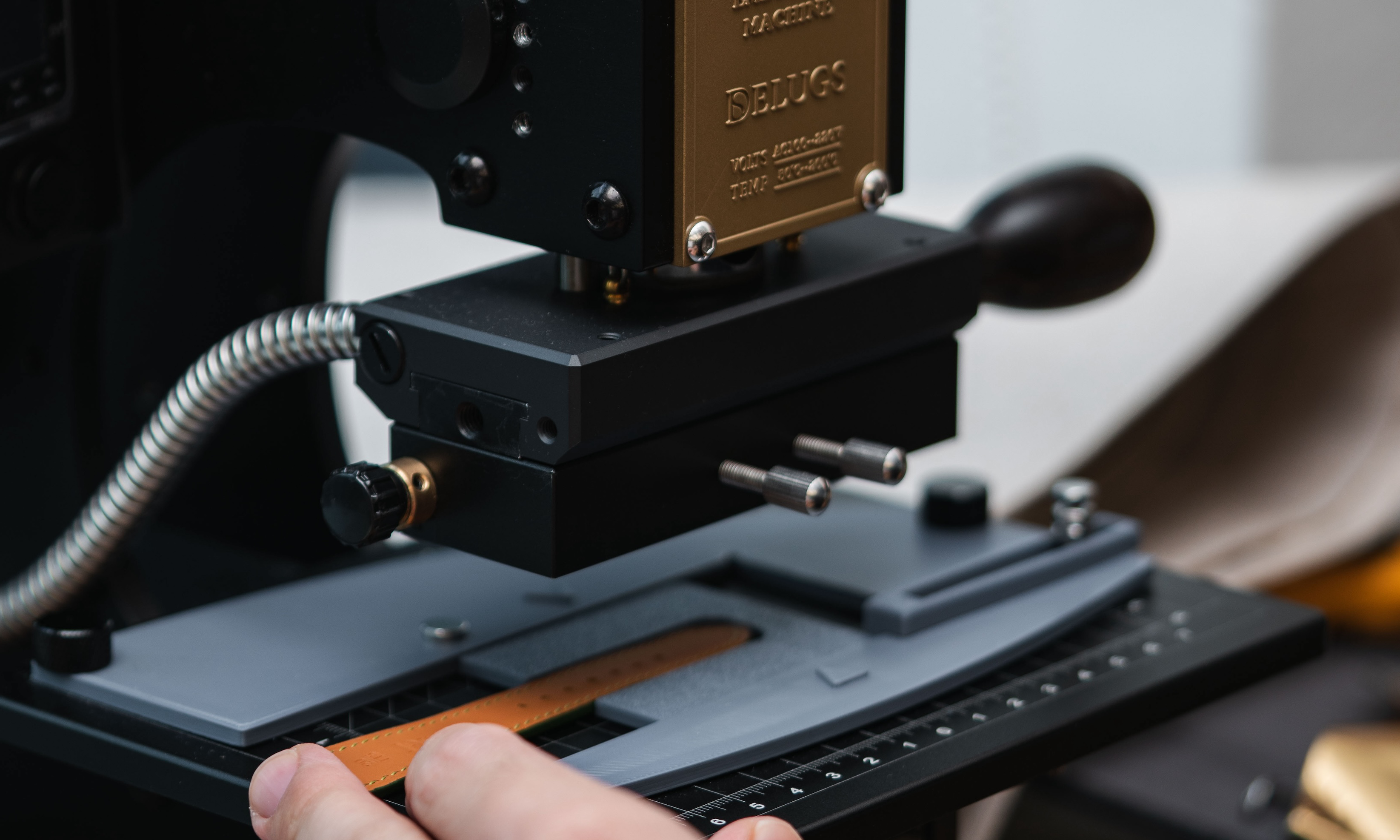





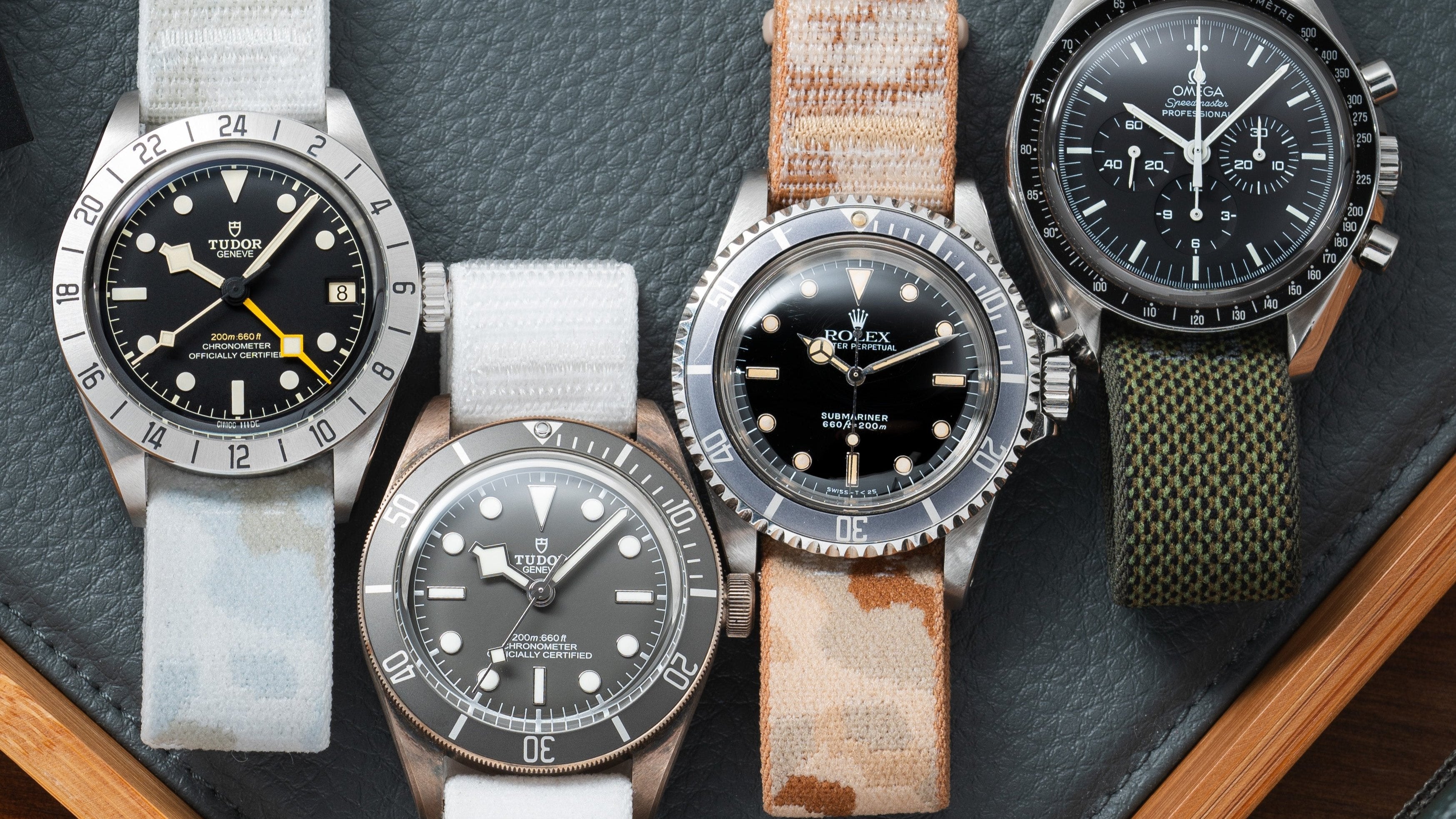
![Anthracite Hook Strap [kollokium x Delugs]](http://delugs.com/cdn/shop/files/20250919-A7405309_298x298_crop_center.jpg?v=1761299094)
![Anthracite Hook Strap [kollokium x Delugs]](http://delugs.com/cdn/shop/files/Kollokium_straps_Anthracite_1_298x298_crop_center.jpg?v=1761299094)
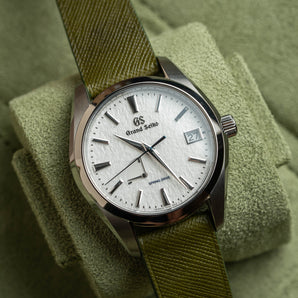
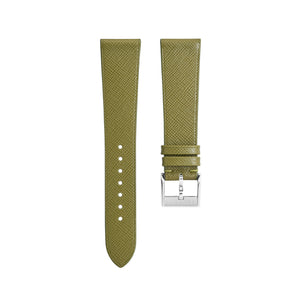
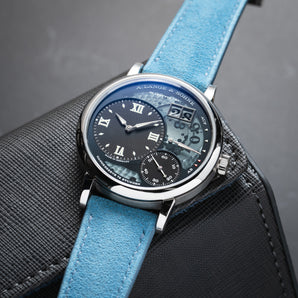
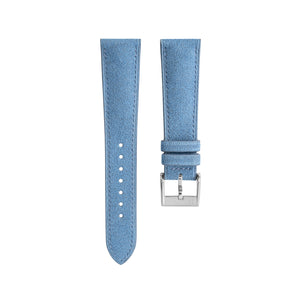
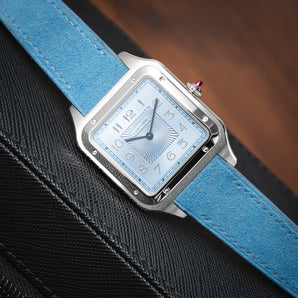
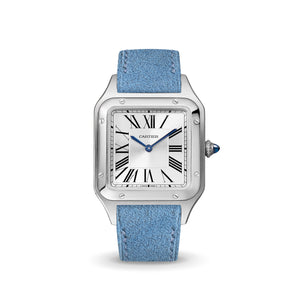
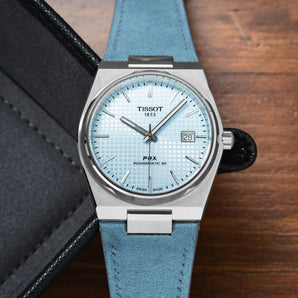
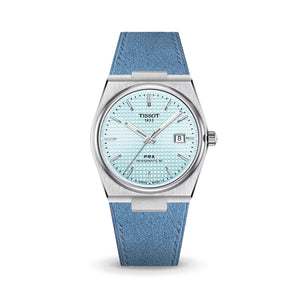
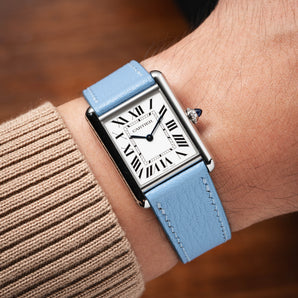
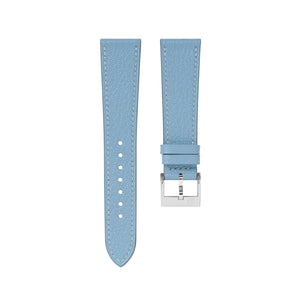
 Buy One, Get One 15% Off
Buy One, Get One 15% Off
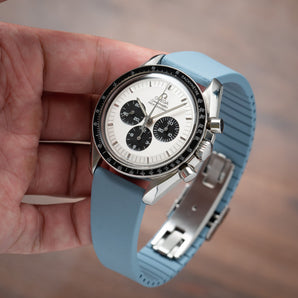

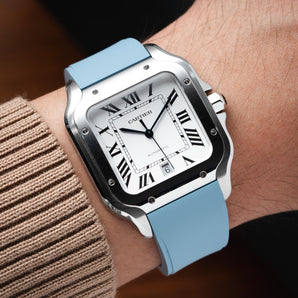
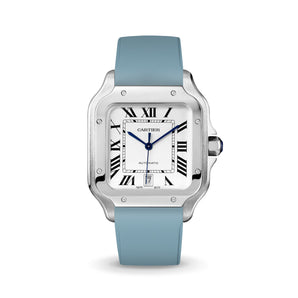
![Baby Blue CTS Rubber Strap for IWC Ingenieur [Prototype]](http://delugs.com/cdn/shop/files/20251001-DSC02482_1_298x298_crop_center.jpg?v=1759730616)
![Baby Blue CTS Rubber Strap for IWC Ingenieur [Prototype]](http://delugs.com/cdn/shop/files/IWC_Ingenieur_Rubber_CTS_Baby_Blue_298x298_crop_center.jpg?v=1759303635)
